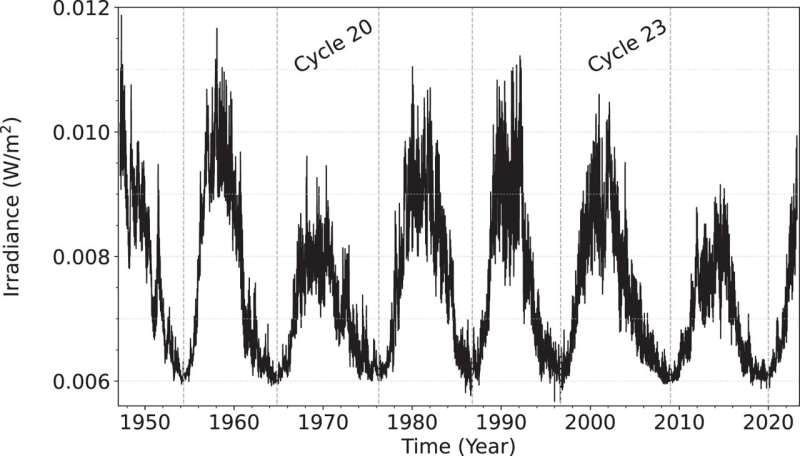This article has been reviewed according to Science X's editorial process and policies. Editors have highlighted the following attributes while ensuring the content's credibility:
fact-checked
peer-reviewed publication
trusted source
proofread
Researchers investigate rotation in solar transition region

The solar transition region, located between the chromosphere and corona, plays an important role in the formation of solar wind and coronal heating mechanism. The solar transition region is not a statically layered structure, but a dynamic region with very uneven magnetic field and plasma structure.
Rotation is crucial in the generation and evolution of the solar magnetic field. Previous studies of temporal variation of the solar rotation focused on the photosphere, chromosphere, and corona. Research on rotation of the solar transition region is rare.
Researchers led by Ph.D. Candidate Zhang Xiaojuan and Prof. Deng Linhua from Yunnan Observatories of the Chinese Academy of Sciences (CAS) investigated the rotation period, secular trend and its relationship with the solar cycle in the solar transition region based on Lyα spectral line (originating from the low transition region) irradiance data from 1947 to 2022. This work was published in The Astrophysical Journal Letters on June 27.
The researchers found that the rotation period in the low transition region varied from 19.25 to 31.25 days, with an average of 25.45 days. The large-scale variation range of the rotation period length was similar in the photosphere and corona, for instance, the period range of the photospheric rotation was from 21.0 to 30.3 days, and the coronal rotation length was from 19.0 to 29.5 days.
They also revealed that the global rotation of the low transition region exhibited a continuous downward trend (with a sustained increase in rotation rate). There are two possible reasons for this secular feature: weakening of the solar global magnetic field and decrease in heliospheric environment pressure.
More information: Xiaojuan Zhang et al, Temporal Variation of the Rotation in the Solar Transition Region, The Astrophysical Journal Letters (2023). DOI: 10.3847/2041-8213/acd9a3
Journal information: Astrophysical Journal Letters
Provided by Chinese Academy of Sciences





















